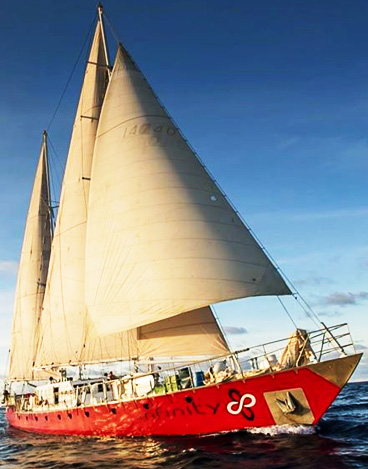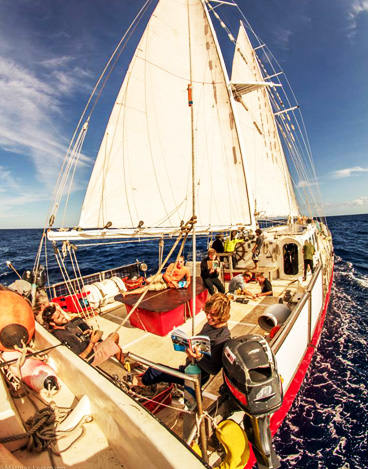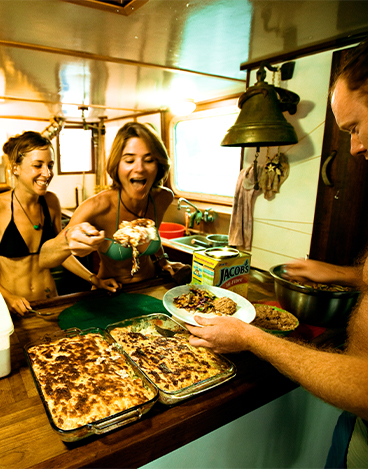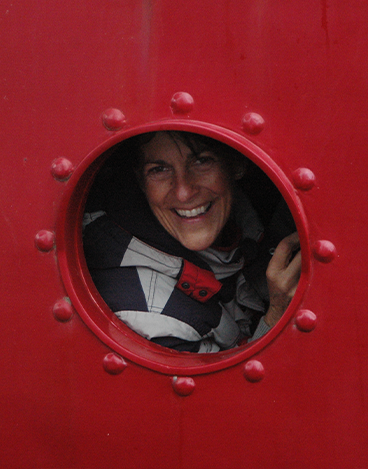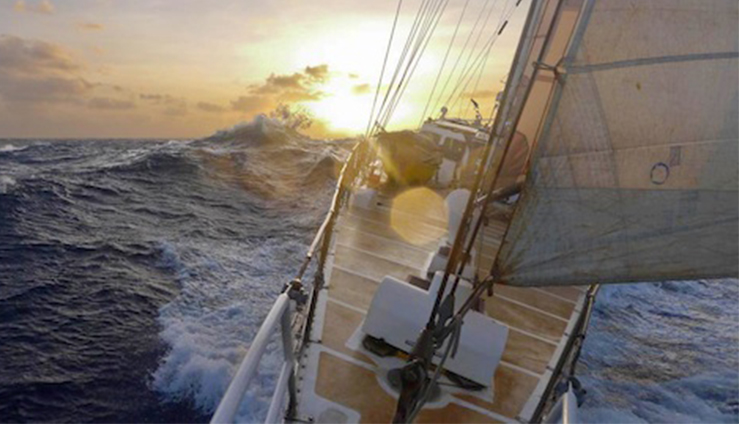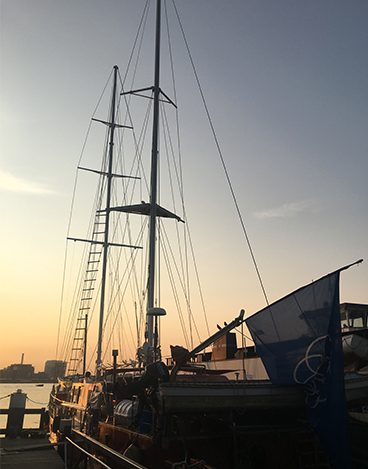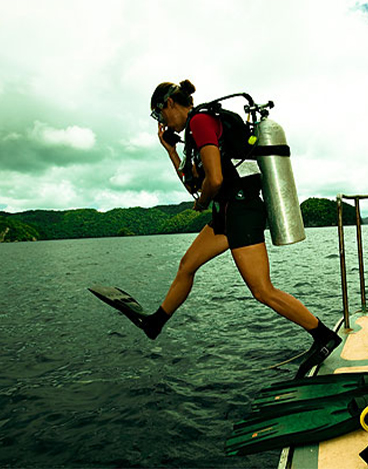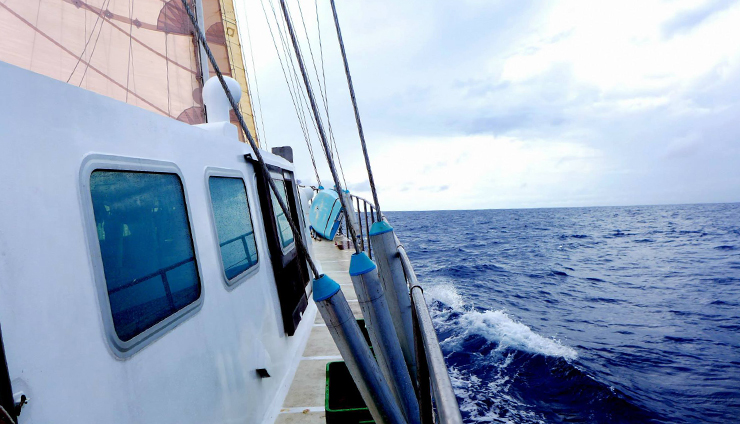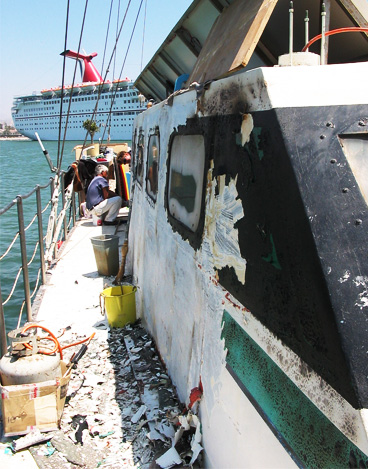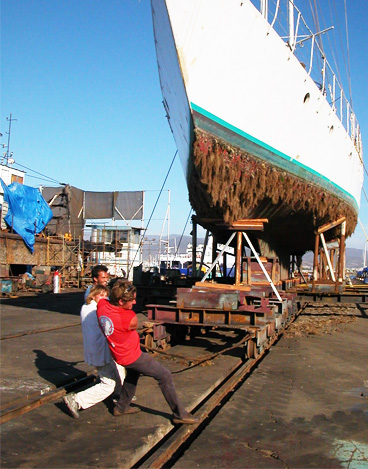
Infinity is a seasoned sailor
Infinity was originally built in California 1977 as a private yacht. Incomplete, she ended up derelict and for sale.
Clemens purchased her in 2004. He undertook several refits in stages, while sailing Infinity over 200.000 nautical miles to all continents, the tropics and both polar regions.
Infinity is a very capable ship with lots of character and plenty of faults; the same is true about her crew.
Infinity is a seasoned sailor
Infinity was originally built in California 1977 as a private yacht. Incomplete, she ended up derelict and for sale.
Clemens purchased her in 2004. He undertook several refits in stages, while sailing Infinity over 200.000 nautical miles to all continents, the tropics and both polar regions.
Infinity is a very capable ship with lots of character and plenty of faults, the same is true about her crew.
SV Infinity


SV Infinity
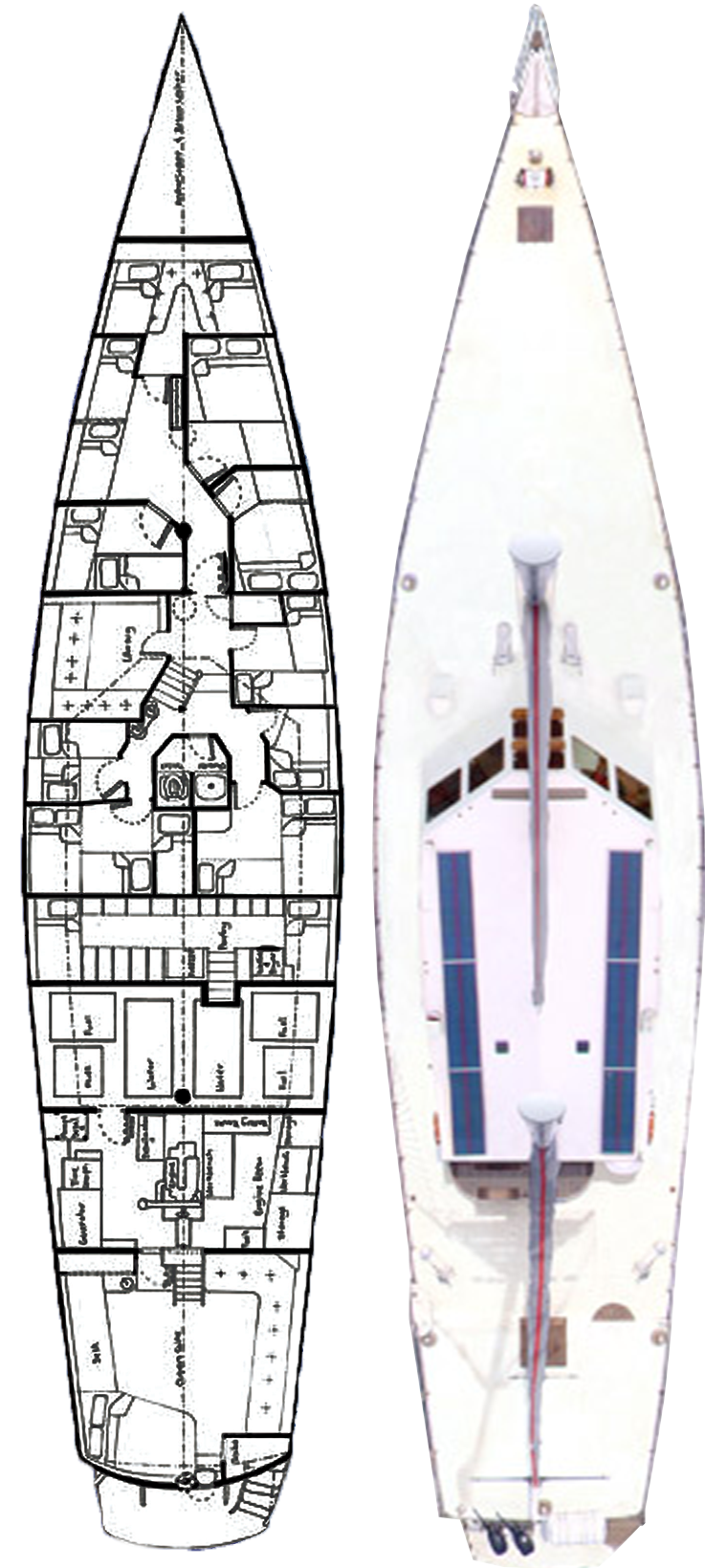
Specifications
Length over all: 36.7 meters
Beam: 7.6 meters
Draft: 3.1 meters
Displacement: 200 tones
Mast hight: 30 meters
Sail area: 400 sq. meters
Propulsion: MAN V10, 450 HP
Generator: 20 KW
Desalinator: 200 liter/hour
Water: 3500 liters
Fuel: 6.500 liters
5 watertight bulkheads
Rig: Ketch
Year of Construction: 1977
Builder: J. Monroe, California
Flag: EarthFlag
Specifications
Length over all: 36.7 meters
Beam: 7.6 meters
Draft: 3.1 meters
Displacement: 200 tones
Mast hight: 30 meters
Sail area: 400 sq. meters
Propulsion: MAN V10, 450 HP
Generator: 20 KW
Desalinator: 200 liter/hour
Water: 3500 liters
Fuel: 6.500 liters
5 watertight bulkheads
Rig: Ketch
Year of Construction: 1977
Builder: J. Monroe, California
Flag: EarthFlag
Our home rocks
Infinity’s interior is purpose built for community by Clemens and many helping hands. The interior is simple and solid, crafted from various hardwoods.
Shared interior spaces include a spacious saloon with panorama windows, an open galley upstairs, a cozy library midships and a lounge aft. Outside areas include a spacious deck, the cockpit and a poopdeck with large table and bathing platform at the stern. Accommodation is in twelve double and twin cabins with shared toilets and showers. The engine boasts a large workshop.
Our home rocks
Infinity’s interior is purpose built for community by Clemens and many helping hands. The interior is simple and solid, crafted from various hardwoods.
Shared interior spaces include a spacious saloon with panorama windows, an open galley upstairs, a cozy library midships and a lounge aft. Outside areas include a spacious deck, the cockpit and a poopdeck with large table and bathing platform at the stern. Accommodation is in twelve double and twin cabins with shared toilets and showers. The engine boasts a large workshop.
Propelled by wind and muscle
Infinity has two aluminium masts and is a Ketch, sails are operated manually and there is no autopilot. Steering is done, by hand, outside, by means of a big wheel. To sail Infinity requires ample strength from an enthusiastic crew. Her sails are made from up-cycled rejects from the super-yacht industry, her systems are home-built. Infinity has been in many tough situations and has met plenty of bad weather; she has proven to be a seaworthy ship.
Propelled by wind
Infinity has two aluminium masts and is a Ketch, sails are operated manually and there is no autopilot. Steering is done by hand, outside, by means of a big wheel. To sail Infinity requires ample strength from an enthusiastic crew. Her sails are made from up-cycled rejects from the super-yacht industry, her systems are home-built. Infinity has been in many tough situations and has met plenty of bad weather; she has proven to be a seaworthy ship.
How it all began
Captain Clemens bought Infinity on a shoestring budget in San Diego California in 2004.
Before becoming a seaworthy vessel, the entire ship had to be gutted and all systems and the interior had to be replaced. Most parts used were bought second-hand and the labor voluntary.
A lot of blood, sweat and tears where involved in this ongoing process.
How it all began
Captain Clemens bought Infinity on a shoestring budget in San Diego California in 2004.
Before becoming a seaworthy vessel, the entire ship was gutted and all systems and the interior replaced. Most parts used were second-hand and the labor voluntary.
A lot of blood, sweat and tears where involved in this ongoing process.
You can help
If you resonate with our mission and want to help keep us fed, safe, and doing what we love, then please click the button below. Thanks a million!
You can help
If you resonate with our mission and want to help keep us fed, safe, and doing what we love, then please click the button below. Thanks a million!

